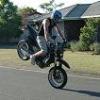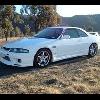blowing speakers
Announcements
-
Similar Content
-
Latest Posts
-
You need one of those automated sprays that puffs a nice small every 15 minutes in their room. Except swap the nice smell for chloroform...
-
Don't step down power supply size, maintain it the whole way. It's how I'd do it. OR, Id have one feed, with one joint that splits out to six smaller gauge wires that go to each coil. I wouldn't add joins like stepping from 12 to 16, at the first two coils, as if you try to continue that fashion, each joint will introduce a voltage drop. In theory, earths should be the same size as power feeds, however in this case the main power needs to be bigger due to the average size current. So the next question is, how much current do these coils actually need?
-
I think Murray is onto it. It's sounding like either it's a soft block, not long enough block, OR if you're chasing waves, you're going in the direction of the waves, instead of across them. Rotate your sanding pattern by 45 degrees is something to try. You said you're going in an X, so now instead, from the same perspective, do a "t" instead. If you're not able to have the block sit on top of two high points, and not touch the low point between them, you'll never get it flat.
-
Hi, i’m making Vag coil loom for rb25det, can anyone confirm the wire guage i’m using for power supply in diagram is enough for supply not too small for loom? For earth do i need to follow the same procedure or i can use only 16awg wire for all coil and their connecting wire following to the plug?
-
By Murray_Calavera · Posted
Did you panel beat the dents or have you tried to repair this only using filler? Is your sanding block soft/flexible and is following the shape of the panel rather then just knocking down the high points?
-






Recommended Posts
Create an account or sign in to comment
You need to be a member in order to leave a comment
Create an account
Sign up for a new account in our community. It's easy!
Register a new accountSign in
Already have an account? Sign in here.
Sign In Now